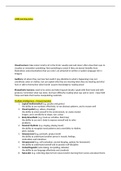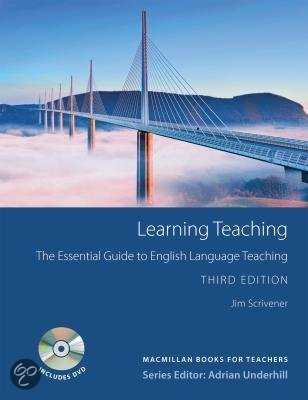VARK learning styles
Visual learners: take notes/ tend to sit in the front/ usually neat and clean/ often close their eyes to
visualize or remember something/ find something to watch if they are bored/ benefits from
illustrations and presentations that use color/ are attracted to written or spoken language rich in
imagery
Auditory: sit where they can hear but needn’t pay attention to what is happening/ may not
coordinate colors or clothes, but can explain why they are wearing what they are wearing and why/
hum or talk to themselves when bored/ acquire knowledge by reading aloud
Kinaesthetic learners: need to be active and take frequent breaks/ speak with their hand and with
gestures/ remember what was done, but have difficulty recalling what was said or seen/ enjoy field
triops and tasks that involve manipulating materials.
Multiple intelligences – Howard Gardner
1. Logical/mathematical (e.g. puzzles and games)
the ability to use numbers effectively, to see abstract patterns, and to reason well
2. Visual/spatial (e.g. videos, drawings)
the ability to orient oneself in the environment, to create mental
images, and a sensitivity to shape, size, colour
3. Body/kinesthetic (e.g. hand-on activities, field trips)
the ability to use one’s body to express oneself and to solve
problems
4. Musical/rhythmic (e.g. singing, playing music)
the ability to recognize tonal patterns and a sensitivity to rhythm,
pitch, melody
5. Interpersonal (e.g. pairwork, project work)
the ability to understand another person’s moods, feelings,
motivations and intentions
6. Intrapersonal (e.g. self-evaluation, journal keeping, options for homework)
the ability to understand oneself and to practice self-discipline
7. Verbal/linguistic (note-taking, storytelling, debates)
the ability to use language effectively and creatively
8. Naturalist (e.g. collecting objects from natural world; learning their names and about them)
, the ability to relate to nature and to classify what is observed
Gardner has developed a related theory, focused on cognitive abilities that individuals need
to develop in order to be successful in a changing world. Gardner proposes five minds, ways
of thinking and acting in the world, which students need to develop.
The five minds
Gardner has developed a related theory, focused on cognitive abilities that individuals need
to develop in order to be successful in a changing world. Gardner proposes five minds, ways
of thinking and acting in the world, which students need to develop.
1. The disciplinary mind
students master a traditional body of information
2. Synthesizing mind
focus shifts to bringing together, organizing, understanding and articulating information
from various disciplines in a unified and coherent whole.
3. Creating mind
students are encouraged to come up with new ideas, original solutions and creative
questions.
4. Respectful mind
awareness of appreciation for, and openness to the differences and individuality of
others
5. Ethical mind
encourages students to cultivate a sense of responsibility for themselves and for the
wellbeing of others
Sternberg successful intelligence p. 47-48
Many children fail to learn at a level that matches their ability to learn. There can be a number of
reasons for this failure. One reason is that the way students are taught and often assessed in school
does not enable them to learn and perform in an optimal way.
Successful intelligence is the use of an integrated set of abilities needed to attain success in life,
however an individual defines it, within his or her sociocultural context. Successfully intelligent
people adapt to, shape, and select environment. In adaption, they change themselves to fit the
environment. In shaping, people change the environment. In selection, they find a new
environment.
Teaching analytically means encouraging students to (a) analyse, (b) critique, (c) judge, (d) compare
and contrast, (e) evaluate, and (f) assess.
Teaching creatively means encouraging students to (a) create, (b) invent, (c) discover, (d) imagine
if…, (e) suppose that…, and (f) predict. Teaching for creativity requires not only to support and
encourage creativity, but also to role-model it and reward it when it is displayed. In other words,
teachers need not only to talk the talk, but also to walk the walk.
Teaching practically means encouraging students to (a) apply, (b) use, (c) put into practice, (d)
implement, (e) employ, and (f) render practical what they know.
Why should teaching for successful intelligence improve performance relative to standard (or critical
‐thinking) instruction, even when performance is assessed for straightforward memory -
based recall? There are at least four reasons.
teaching for successful intelligence encourages deeper and more elaborated encoding of





